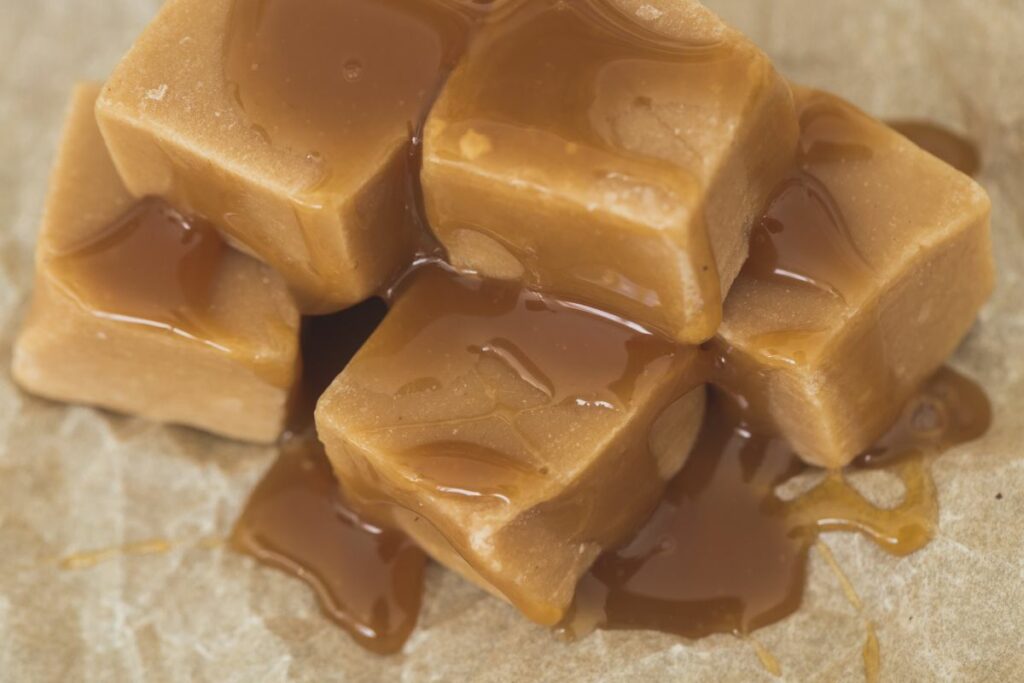Caramel is a popular ingredient in many sweet dishes, from cakes and cookies to ice cream and coffee. However, sometimes you may not have caramel on hand or may want to avoid using it due to dietary restrictions or personal preferences. In these cases, it’s helpful to know some substitutes for caramel that can still add sweetness and flavor to your dishes.
One option for a caramel substitute is butterscotch, which is made with brown sugar instead of white sugar and has a similar taste and consistency to caramel. Another option is caramel syrup, which is made with sugar, water, and corn syrup and can be used in place of caramel extract in recipes. Other substitutes include caramel sauce, caramel liqueur, vanilla, almond, butter extract, golden syrup, and fudge.
By knowing these substitutes, you can still enjoy the taste of caramel in your favorite dishes without having to use actual caramel. Whether you’re looking for a dairy-free or low-sugar option, there are substitutes for caramel that can meet your needs.
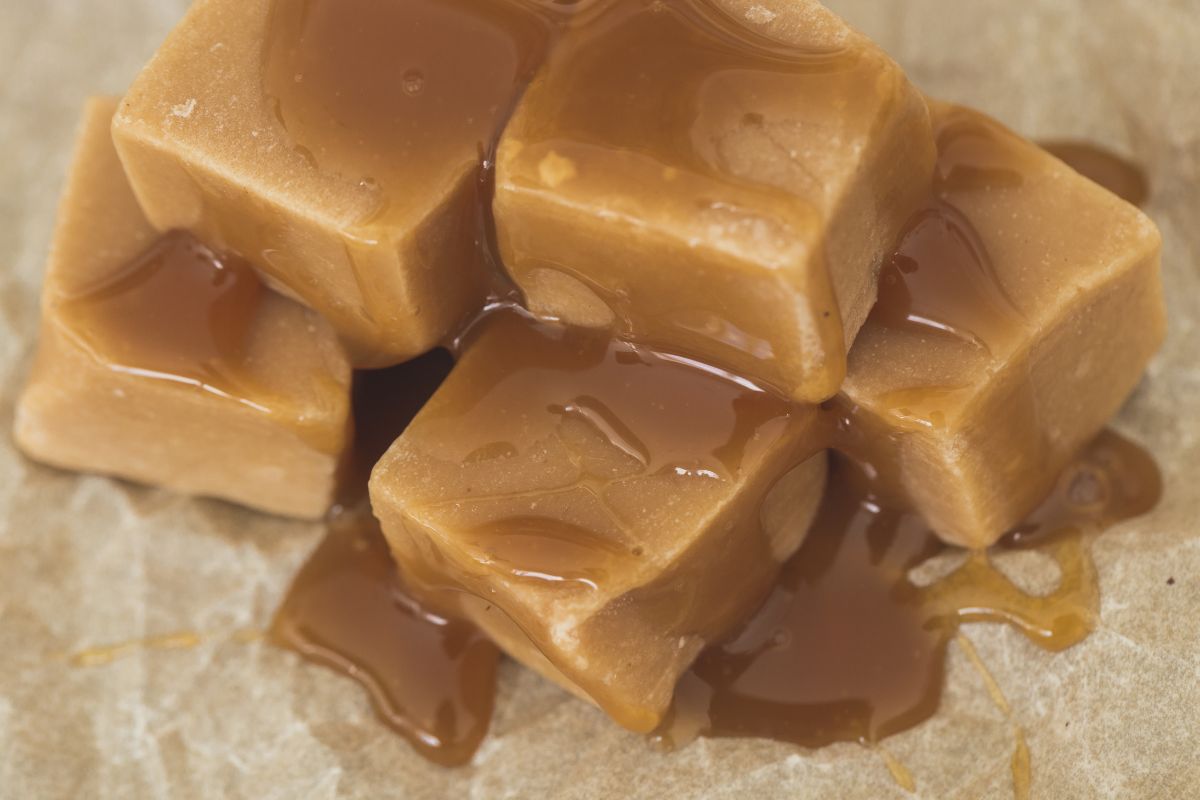
Contents
Understanding Caramel and Its Role in Baking
Caramel is a confectionery ingredient that is widely used in baking. It is made by heating sugar until it melts and turns brown, giving it a distinct flavor and color. Caramel can be used in various forms, such as caramel sauce, caramel candy, and caramelized sugar.
When caramelizing sugar, the sugar is heated until it melts and turns brown. The longer the sugar is heated, the darker the caramel will become, resulting in a more intense flavor. Caramelized sugar is often used as a topping for desserts, such as crème brûlée.
Caramel is a popular ingredient in baking because of its unique characteristics. It adds a rich, sweet flavor to baked goods and can be used to enhance the flavor of other ingredients. Caramel also adds moisture to baked goods, making them more tender and moist.
There are different types of caramel, each with its own level of sweetness and flavor intensity. Light caramel has a mild flavor and is often used in recipes that require a subtle caramel flavor. Dark caramel, on the other hand, has a stronger flavor and is often used in recipes that require a more intense caramel flavor.
In baking, caramel can be used in various ways. It can be used as a filling for cakes and pastries, as a topping for ice cream, or as a flavoring for sauces and glazes. Caramel can also be used to add sweetness to savory dishes, such as roasted vegetables or meats.
Overall, caramel is an essential ingredient in baking that adds a unique flavor and texture to baked goods. Whether used as a topping, filling, or flavoring, caramel is a versatile ingredient that can be used in a variety of ways to enhance the flavor of baked goods.
Common Uses of Caramel in Recipes
Caramel is a versatile ingredient that is used in various recipes to add a sweet, rich, and nutty flavor. It is a popular ingredient in desserts, baked goods, and candies. Here are some common uses of caramel in recipes:
Desserts
Caramel is a popular ingredient in desserts like cakes, pies, and tarts. It can be used to make caramel custard, caramel flan, and caramel cheesecake. Caramel can also be used to make caramelized fruits like apples, pears, and bananas.
Cookies
Caramel can be used to make delicious cookies like caramel thumbprint cookies, caramel apple cookies, and butterscotch cookies. It can also be used to make cookie bars and brownies.
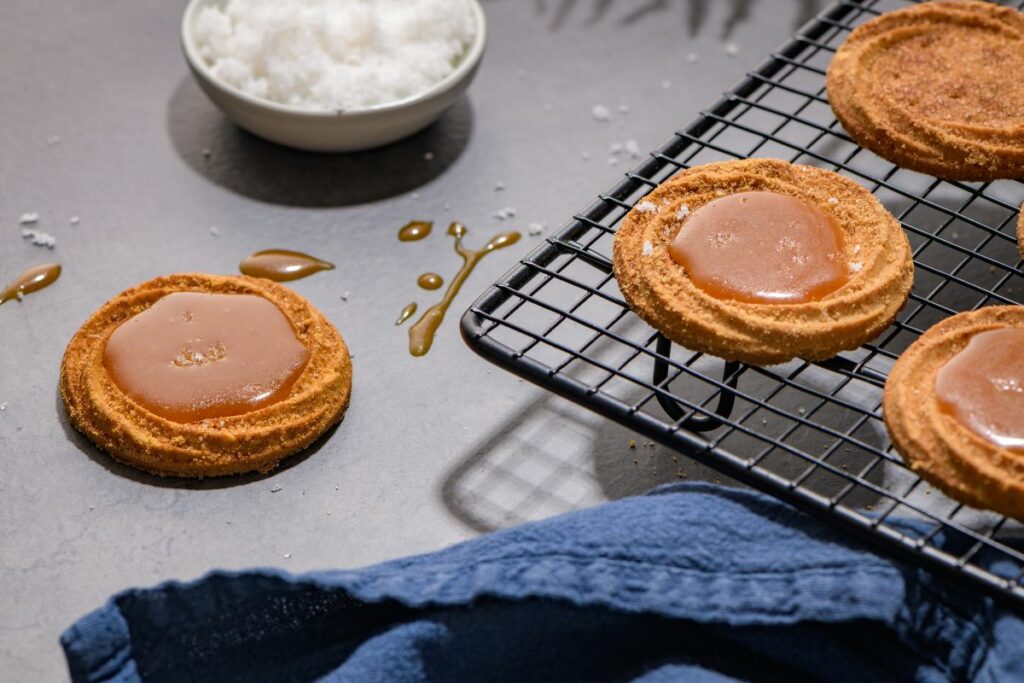
Pudding
Caramel can be used to make sweet puddings like caramel bread pudding, caramel rice pudding, and caramel banana pudding. It can also be used to make creamy and delicious caramel flan.
Caramel Sauce
Caramel sauce is a popular topping for ice cream, cakes, and pies. It can also be used as a dip for fruits like apples, strawberries, and bananas. Caramel sauce can be made using caramel syrup, caramel candy, or caramel flavoring.
Caramel Syrup
Caramel syrup can be used to sweeten coffee, tea, and other beverages. It can also be used as a topping for pancakes, waffles, and French toast. Caramel syrup can be made using sugar, water, and vanilla extract.
Caramel Liqueur
Caramel liqueur is a popular ingredient in cocktails like caramel apple martini, caramel white Russian, and caramel Irish coffee. It can also be used to add flavor to desserts like tiramisu and ice cream.
Caramel Candy
Caramel candy is a popular treat that can be made using sugar, cream, and butter. It can be used to make caramel apples, caramel popcorn, and caramel fudge.
Overall, caramel is a versatile ingredient that can be used in various recipes to add a sweet and nutty flavor. It can be used in desserts, cookies, puddings, and as a topping for ice cream and other treats.
Key Ingredients in Caramel
Caramel is a sweet and rich confectionery made from a few simple ingredients. Here are the key ingredients that make up caramel:
Sugar
Sugar is the main ingredient in caramel. It is heated until it melts and turns into a golden-brown color. The type of sugar used can affect the taste and texture of the caramel. White granulated sugar is the most commonly used sugar in caramel making.
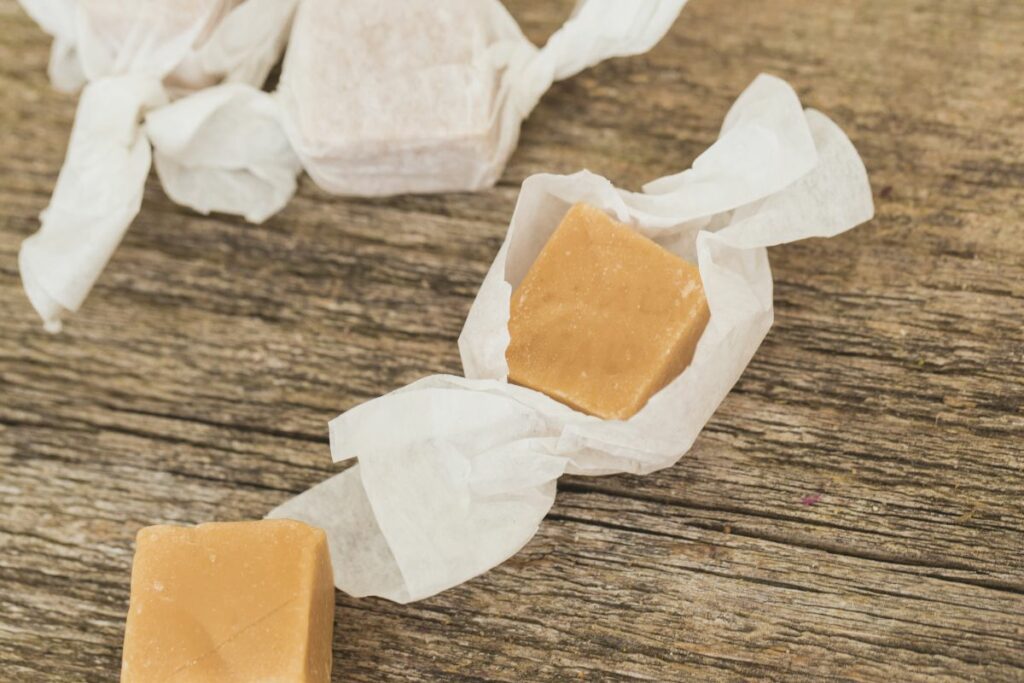
Butter
Butter is another key ingredient in caramel. It adds richness and flavor to the caramel. Unsalted butter is typically used in caramel recipes to control the amount of salt in the final product.
Vanilla Extract
Vanilla extract is often added to caramel to enhance its flavor. It adds a subtle sweetness and a warm, comforting aroma to the caramel.
Butter Extract
Butter extract is a flavoring that can be used to add a buttery taste to caramel. It is made from natural or artificial flavors and can be found in most grocery stores.
Caramel Extract
Caramel extract is a concentrated flavoring that can be used to add a caramel flavor to baked goods and desserts. It is made from caramelized sugar and can be found in most specialty food stores.
Salt
Salt is added to caramel to balance out the sweetness and enhance the flavor. It is usually added in small amounts, but can be adjusted to taste.
Condensed Milk
Condensed milk is a thick, sweet milk that is often used in caramel recipes. It adds richness and a creamy texture to the caramel.
Pure Caramel
Pure caramel is a thick, sticky syrup made from caramelized sugar. It can be used as a topping for ice cream or as a flavoring in baked goods.
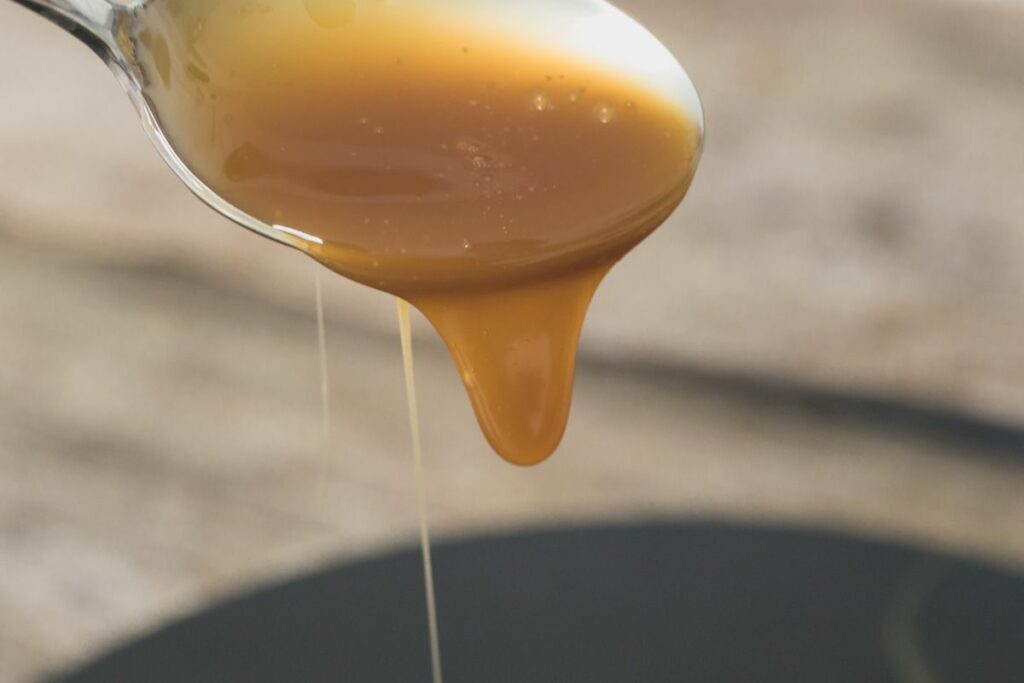
Caramel Flavoring
Caramel flavoring is a concentrated liquid that can be used to add a caramel flavor to baked goods and desserts. It is made from natural or artificial flavors and can be found in most grocery stores.
Chocolate Chips
Chocolate chips can be added to caramel to create a delicious chocolate caramel flavor. They can be melted and mixed into the caramel or used as a topping for desserts.
Common Caramel Substitutes and Their Characteristics
When it comes to substituting caramel in recipes, there are several options available that can provide a similar taste and texture. Here are some common substitutes for caramel and their characteristics:
- Butterscotch: Butterscotch is a great substitute for caramel as it has a similar taste and flavor. It is made with brown sugar instead of white sugar, which gives it a distinct flavor. Butterscotch can be used in recipes that call for caramel, such as in desserts or sauces.
- Almond Extract: Almond extract can be used as a substitute for caramel extract in recipes. It has a sweet, nutty flavor that can complement many desserts. However, it may not provide the same depth of flavor as caramel extract.
- Golden Syrup: Golden syrup is a thick, amber-colored syrup that is made from sugar cane. It has a sweet, caramel-like flavor and can be used as a substitute for caramel in recipes such as cakes, cookies, and sauces.
- Fudge: Fudge can be used as a substitute for caramel in recipes that call for a thick, sweet sauce. It has a similar texture and sweetness to caramel and can be used in desserts such as brownies, cakes, and ice cream.
- Flavoring: Caramel flavoring can be used as a substitute for caramel extract in recipes. It is a concentrated liquid that has a strong caramel flavor. However, it may not provide the same depth of flavor as caramel extract.
- Brown Sugar: Brown sugar can be used as a substitute for caramel in recipes that call for a sweet, caramel-like flavor. It has a similar taste and texture to caramel and can be used in desserts such as cookies, cakes, and sauces.
- Toffee: Toffee is a hard, brittle candy that is made from sugar and butter. It has a sweet, caramel-like flavor and can be used as a substitute for caramel in recipes such as cakes, cookies, and ice cream.
Most of these substitutes can be found in the baking aisle of your local grocery store or on Amazon. When substituting caramel in a recipe, it is important to keep in mind the texture and sweetness of the substitute to ensure that it will work well in the recipe.
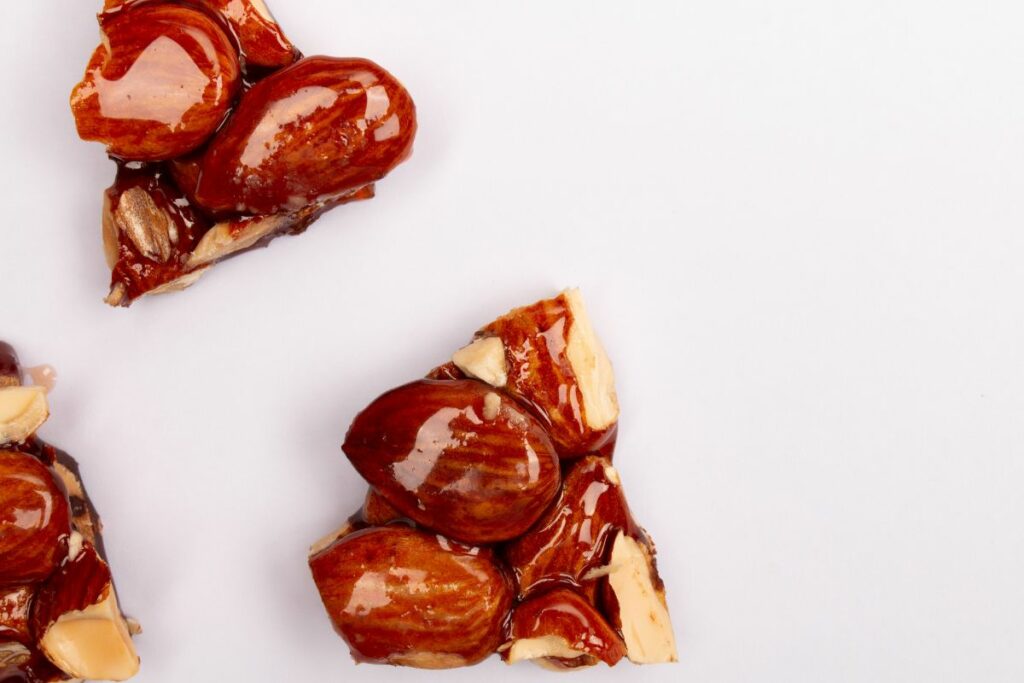
How to Make Homemade Caramel and Its Substitutes
Making homemade caramel is easier than you might think! All you need is sugar, a heavy-bottomed saucepan, and a little patience. Here’s how to make it:
- Heat sugar in a heavy-bottomed saucepan over medium heat until it melts and becomes clear. Be sure to stir the sugar constantly to prevent it from burning.
- Once the sugar has melted, continue to cook it until it turns a deep amber color. This should take around 10-15 minutes.
- Remove the saucepan from the heat and carefully pour in heavy cream, stirring constantly. Be careful, as the mixture will bubble up and steam.
- Stir in butter and salt until they are fully incorporated.
- Let the caramel cool completely before using it in your recipe.
If you don’t have the time or ingredients to make homemade caramel, there are plenty of substitutes you can use. Here are a few:
- Butterscotch: Made with brown sugar instead of white sugar, butterscotch has a similar taste and flavor to caramel.
- Caramel syrup: If you need a liquid substitute for caramel extract, caramel syrup is a great option. Just be sure to use two to three times the amount of caramel syrup as you would extract, as it is much sweeter.
- Caramel candy: Crushed caramel candy can be used as a substitute for caramel extract in baked goods.
- Caramel flavoring: Caramel flavoring is a concentrated flavor that can be used in place of caramel extract. Just be sure to use it sparingly, as it can be quite potent.
When using a caramel substitute, be sure to adjust the amount of sugar in your recipe accordingly. Most substitutes are not as sweet as caramel, so you may need to add a little extra sugar to achieve the desired level of sweetness.
Overall, making your own homemade caramel is a great way to add a delicious, not overly sweet flavor to your cooking and baking. And if you don’t have the time or ingredients to make it from scratch, there are plenty of substitutes available that will do the trick.
